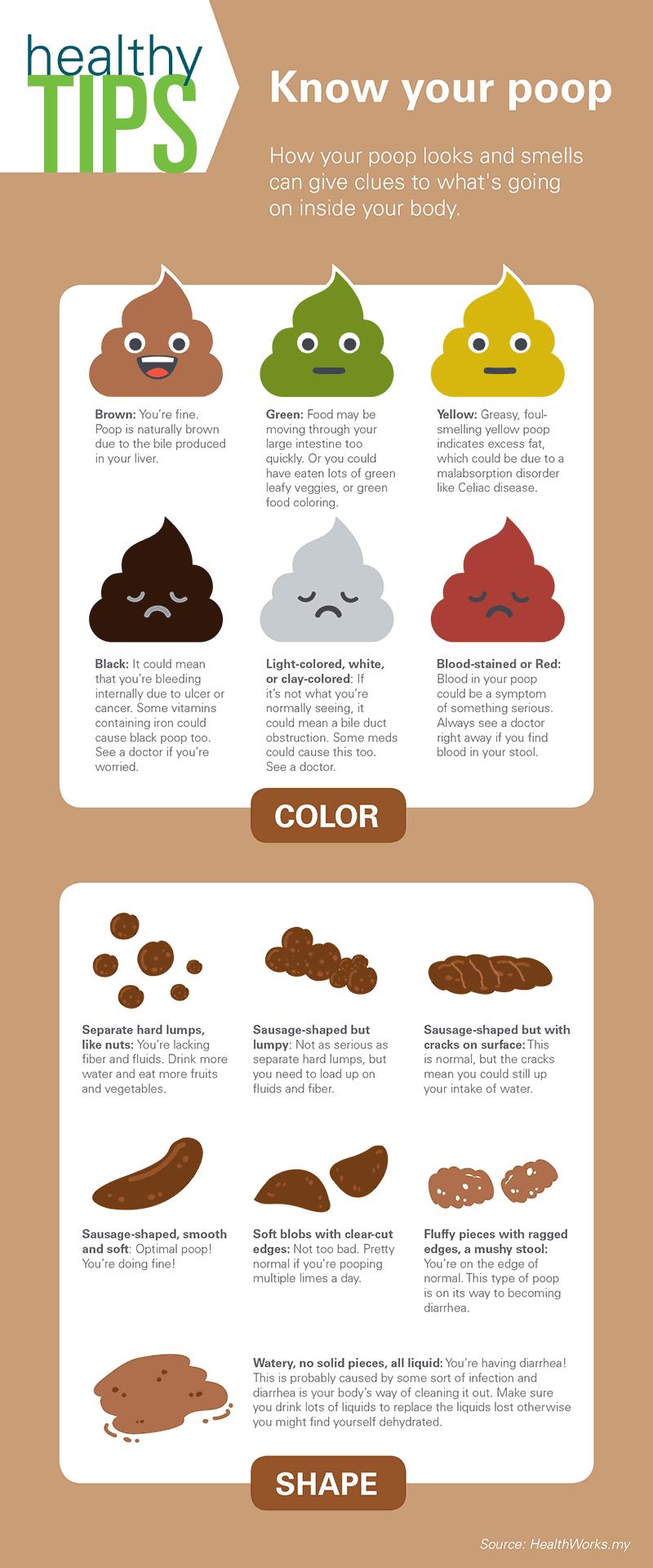What color of Poop is bad?
Poop color can vary widely based on diet, hydration, medications, and underlying health conditions. While it's normal for stool to fluctuate in color, certain colors might indicate potential health issues:
Black or Tarry Stool: This can signify bleeding in the upper digestive tract, possibly from the stomach or small intestine. It could be due to medications like iron supplements or bismuth-containing medications (like Pepto-Bismol).
Red Stool: Red or maroon-colored stool might indicate bleeding in the lower digestive tract, such as the colon or rectum. It could also be from certain foods like beets or red-colored drinks.
Pale or Clay-Colored Stool: Light or clay-colored stool might indicate a lack of bile in the stool, potentially due to issues with the liver, gallbladder, or bile ducts.
Green Stool: Green stool can be due to the rapid transit of stool through the intestines, often caused by eating green-colored foods or consuming certain dyes or medications. It can also occur with diarrhea.
Yellow Stool: Stool that appears yellow might be due to excess fat, indicating issues with the digestive system's ability to process fats properly, such as in conditions like malabsorption or pancreatic disorders.
It's essential to consider other symptoms, such as abdominal pain, changes in bowel habits, or accompanying symptoms like fever or vomiting, alongside stool color changes. Persistent or concerning changes in stool color, especially if accompanied by other symptoms, should prompt a consultation with a healthcare professional for proper evaluation and diagnosis.
- Identifying Concerning Stool Colors:
Stool color can provide valuable insights into your digestive health. While variations in color are common due to dietary factors, certain colors may signal potential health issues.
Black stools: Black stools, particularly if tarry or sticky, can indicate bleeding in the upper digestive tract, including the esophagus, stomach, or small intestine. This bleeding can arise from ulcers, gastritis, or more serious conditions like esophageal cancer.
Red stools: Red or bright red stools, often described as having a "bloody" appearance, suggest bleeding in the lower digestive tract, including the colon, rectum, or anus. This bleeding can be caused by hemorrhoids, anal fissures, or more severe conditions like ulcerative colitis or colon cancer.
White stools: Pale, chalky, or clay-colored stools can indicate a lack of bile in the stool. Bile, produced by the liver and stored in the gallbladder, gives stool its normal brown color. A lack of bile can result from problems with bile duct obstruction or liver disease.
- Black Stools and Upper Digestive Tract Bleeding:
Black stools, often referred to as melena, are a serious symptom that should not be ignored. The dark color arises from the breakdown of hemoglobin, the iron-containing protein in red blood cells, as it passes through the digestive tract.
Causes of Black Stools:
Peptic ulcers: Ulcers in the stomach or duodenum (the first part of the small intestine) can cause black stools due to bleeding.
Gastritis: Inflammation of the stomach lining can lead to erosion and bleeding, resulting in black stools.
Esophageal varices: Enlarged veins in the esophagus can rupture, causing black stools.
Mallory-Weiss tears: Tears in the esophagus, often caused by severe vomiting, can lead to black stools.
- Red Stools and Lower Digestive Tract Bleeding:
Red stools, often referred to as hematochezia, indicate bleeding in the lower digestive tract. The red color is due to the presence of fresh, unaltered blood in the stool.
Causes of Red Stools:
Hemorrhoids: Swollen and inflamed veins in the rectum or anus can bleed, causing bright red streaks on stools.
Anal fissures: Small tears in the lining of the anus can cause bleeding, leading to bright red streaks on stools.
Ulcerative colitis: Chronic inflammation of the colon can cause bloody diarrhea, with stool ranging from red to maroon.
Colon polyps: Small growths in the colon can bleed, sometimes causing red streaks on stools.
Colon cancer: Cancer of the colon can cause bleeding, leading to red streaks or even maroon-colored stools.
Remember, any change in stool color, particularly black or red stools, warrants prompt medical attention. Early diagnosis and treatment of the underlying cause can prevent complications and improve overall health outcomes.













